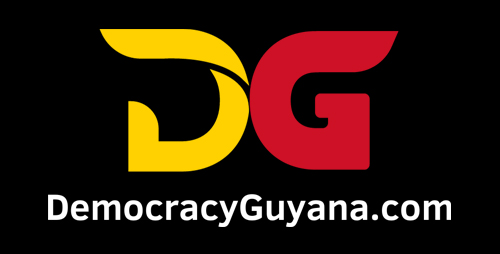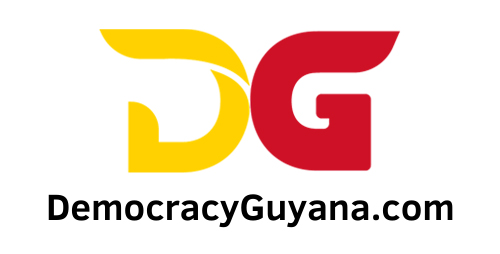ver the last decade, Guyana’s foreign exchange market has come under increasing pressure—not due to a shortage of foreign currency, but as a result of rapid economic expansion, structural imbalances, and compliance gaps. It is important to recognize that the current environment is characterized by liquidity constraints rather than an absolute scarcity of foreign exchange. These constraints are a function of the economy’s accelerated growth, evolving market structures, and the need for enhanced financial management across both public and private sectors.
To properly assess the dynamics at play, it is necessary to examine the forex market through multiple lenses:
• Illegal leakages: Unregulated outflows that undermine market stability.
• Macro fundamentals: The interplay between GDP growth, sectoral output, foreign exchange demand, against the strength of the economy’s net forex reserve.
• Institutional oversight: The effectiveness of regulatory frameworks and compliance mechanisms.
• Financial management in the private sector: The adoption of modern tools and practices to manage liquidity and risk.
Guyana’s economy is expanding at an unprecedented rate. For context, GDP has increased nearly thirtyfold over the last two decades, far outpacing the growth in public and private sector debt. This rapid expansion brings new challenges, particularly in the management of foreign exchange liquidity. The pressures observed are not simply a matter of scarcity; they reflect the realities of a dynamic, high-growth environment that demands more sophisticated financial management.
Historically, many businesses have operated within the confines of traditional accounting—focused primarily on record-keeping and compliance. While necessary, this approach is no longer sufficient.
Financial management has evolved globally, moving from basic accounting to reporting, and now toward Financial Planning & Analysis (FP&A).
FP&A goes beyond looking backward at what has already happened. It is about looking forward:
• Using budgets as dynamic management tools.
• Applying demand analysis and forecasting to anticipate risks and opportunities.
• Leveraging risk management instruments, such as futures contracts, to hedge against liquidity and exchange rate exposures.
• Integrating financial analysis into business strategy to enhance resilience and competitiveness.
While some larger, international corporates have adopted FP&A, it remains underdeveloped across much of Guyana’s private sector. Closing this gap is essential if local firms are to remain competitive in an economy that is evolving at historic speed.
Addressing forex liquidity constraints requires more than enforcement—𝗶𝘁 𝗿𝗲𝗾𝘂𝗶𝗿𝗲𝘀 𝘁𝗵𝗲 𝗽𝗿𝗶𝘃𝗮𝘁𝗲 𝘀𝗲𝗰𝘁𝗼𝗿 𝘁𝗼 𝗲𝗺𝗯𝗿𝗮𝗰𝗲 𝗙𝗣&𝗔 𝗮𝗻𝗱 𝗺𝗼𝗱𝗲𝗿𝗻 𝗿𝗶𝘀𝗸 𝗺𝗮𝗻𝗮𝗴𝗲𝗺𝗲𝗻𝘁 𝘁𝗼𝗼𝗹𝘀 𝘀𝘂𝗰𝗵 𝗮𝘀 𝘁𝗵𝗲 𝗶𝗻𝘁𝗿𝗼𝗱𝘂𝗰𝘁𝗶𝗼𝗻 𝗼𝗳 𝗳𝘂𝘁𝘂𝗿𝗲𝘀 𝗰𝗼𝗻𝘁𝗿𝗮𝗰𝘁 𝗶𝗻 𝘁𝗵𝗲 𝗳𝗼𝗿𝗲𝘅 𝗺𝗮𝗿𝗸𝗲𝘁 𝘁𝗼 𝗺𝗶𝘁𝗶𝗴𝗮𝘁𝗲 𝗳𝗼𝗿𝗲𝘅 𝗹𝗶𝗾𝘂𝗶𝗱𝗶𝘁𝘆 𝗮𝗻𝗱 𝗲𝘅𝗰𝗵𝗮𝗻𝗴𝗲 𝗿𝗮𝘁𝗲 𝗿𝗶𝘀𝗸𝘀. This shift is not optional; it is fundamental to ensuring stability, resilience, and sustainable growth in Guyana’s fast-changing economic landscape.
𝗘𝗻𝗱 𝗡𝗼𝘁𝗲: This is just a preface to a more comprehensive article that will follow shortly. The forthcoming article will be anchored in the macro fundamentals, market exposures, and liquidity management, providing a framework for businesses to navigate Guyana’s financial future.





